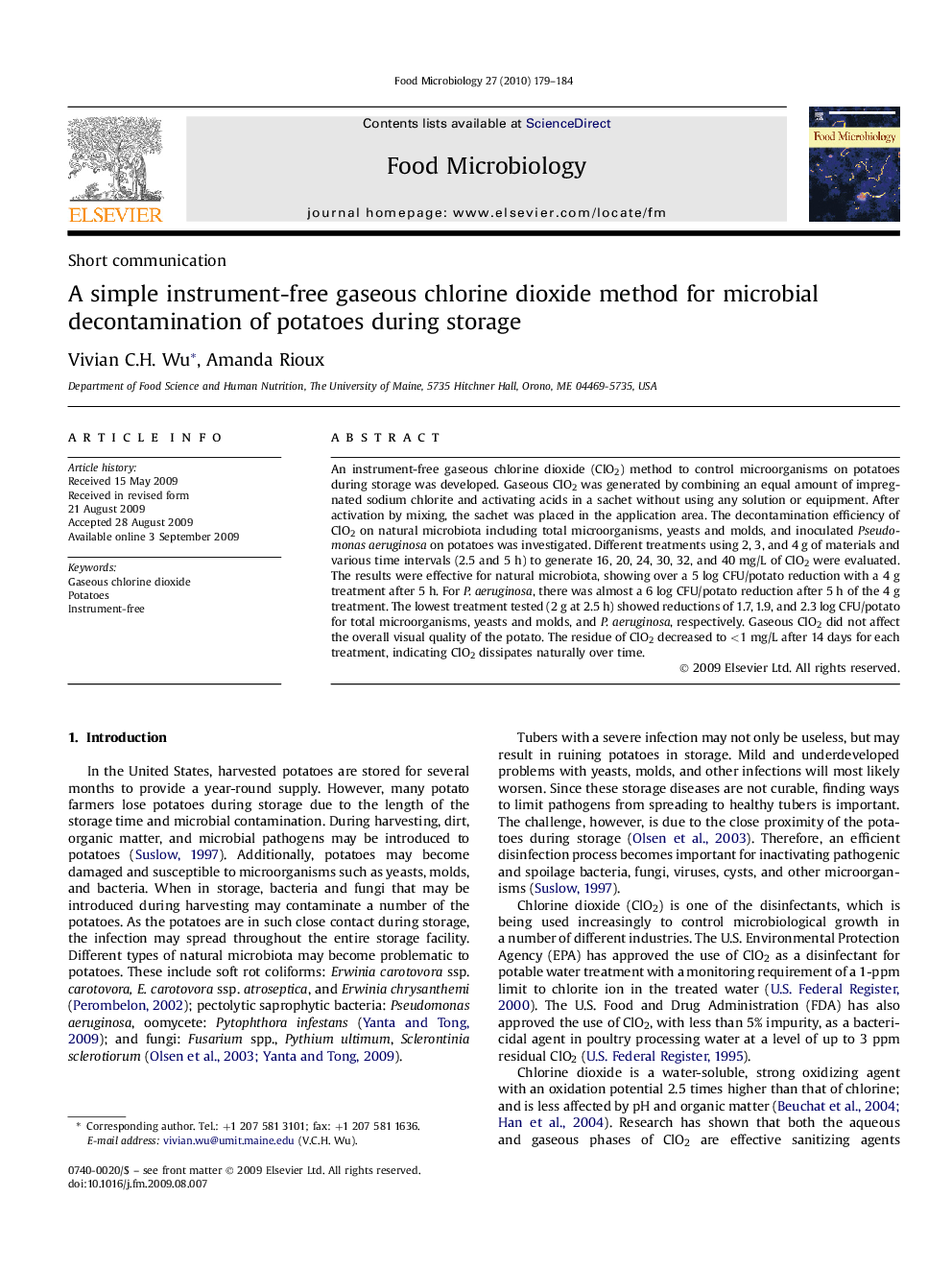| Article ID | Journal | Published Year | Pages | File Type |
|---|---|---|---|---|
| 4363463 | Food Microbiology | 2010 | 6 Pages |
An instrument-free gaseous chlorine dioxide (ClO2) method to control microorganisms on potatoes during storage was developed. Gaseous ClO2 was generated by combining an equal amount of impregnated sodium chlorite and activating acids in a sachet without using any solution or equipment. After activation by mixing, the sachet was placed in the application area. The decontamination efficiency of ClO2 on natural microbiota including total microorganisms, yeasts and molds, and inoculated Pseudomonas aeruginosa on potatoes was investigated. Different treatments using 2, 3, and 4 g of materials and various time intervals (2.5 and 5 h) to generate 16, 20, 24, 30, 32, and 40 mg/L of ClO2 were evaluated. The results were effective for natural microbiota, showing over a 5 log CFU/potato reduction with a 4 g treatment after 5 h. For P. aeruginosa, there was almost a 6 log CFU/potato reduction after 5 h of the 4 g treatment. The lowest treatment tested (2 g at 2.5 h) showed reductions of 1.7, 1.9, and 2.3 log CFU/potato for total microorganisms, yeasts and molds, and P. aeruginosa, respectively. Gaseous ClO2 did not affect the overall visual quality of the potato. The residue of ClO2 decreased to <1 mg/L after 14 days for each treatment, indicating ClO2 dissipates naturally over time.
